The 10 Biggest Archaeology Stories of 2018
Historic finds in 2018
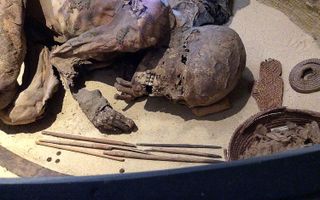
Many fascinating archaeological discoveries were made in 2018. From the world's oldest cheese to the world's oldest brewery to a massive black granite sarcophagus that ignited a media frenzy so wild that some people actually thought its opening would unleash an ancient curse. Here's a look back at the fascinating things archaeologists uncovered this year.
Massive sarcophagus (and mummy juice)
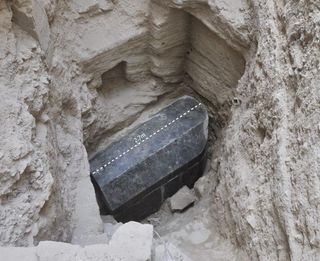
When the sarcophagus was opened, what was discovered was a mix of sewage that had somehow seeped in, along with the remains of skeletons and inscribed gold jewelry. The skeletons include a woman who was between 20 and 25 years of age when she died and two men in their 30s or 40s. One of the men had a small hole in his skull, indicating that he had undergone a surgical procedure called "trepanation." The inscriptions on the gold jewelry are hard to interpret, but one of them definitely shows an image of a snake. How these people ended up in the black granite sarcophagus is a mystery.
Ancient comics
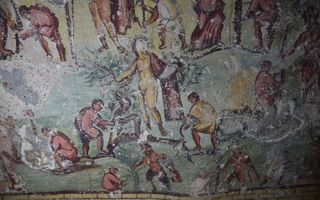
A second century A.D. tomb discovered in Jordan, and announced in September, has a comic-book take on what life was like at the nearby city of Capitolias. Hundreds of illustrated characters, including gods, people and animals, are shown on the tomb, with Aramaic writing explaining what they are doing.
"The inscriptions are actually similar to speech bubbles in comic books, because they describe the activities of the characters, who offer explanations of what they are doing," Jean-Baptiste Yon, a researcher with the History and Sources of Ancient Worlds Laboratory (HiSoMA) in France, was reported as saying.
Rather than superhero battles, many of the characters are shown doing mundane things such as harvesting crops and building defensive walls. Among the characters' statements are "I am cutting (stone)" and another person saying "Alas for me! I am dead!" [Read more about the ancient tomb comics]
4,500-year-old pyramid contraption
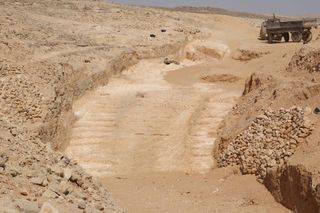
Archaeologists working at the site of Hatnub, an ancient quarry in the eastern desert of Egypt, discovered a ramp system used to pull alabaster stones up a steep slope. Inscriptions found at the site show that it dates back 4,500 years to the reign of Khufu, the pharaoh who constructed the Great Pyramid at Giza. The system may provide clues to how the Great Pyramid was constructed, archaeologists say.
The system used a ramp, sled, ropes and a series of wooden posts to move alabaster blocks up a steep slope. "Using a sled, which carried a stone block and was attached with ropes to these wooden posts, ancient Egyptians were able to pull up the alabaster blocks out of the quarry on very steep slopes of 20 percent or more," said Yannis Gourdon, co-director of the joint mission at Hatnub. The ropes attached to the sled acted as a "force multiplier," making it easier to pull the sled up the ramp, said Roland Enmarch, the other co-director of the Hatnub mission.
Clues to first Americans
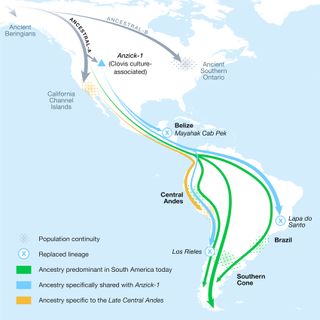
A DNA study of the remains of 49 ancient people found in Central and South America shed some light on the first Americans, revealing a number of mysteries. The oldest remains used in the study date back 11,000 years.
The study revealed that up until 9,000 years ago, the DNA of people in the region was associated with people from the North American Clovis culture. Then, 9,000 years ago, something happened that led to the peopling of Central and South America with a new population that don't appear to be descended from those of the North American Clovis culture. How and why this population replacement occurred is a mystery.
Another mystery the study unlocked is that 4,200 years ago the people who lived in the California Channel Islands and the Peruvian Andes shared the same ancestry despite the vast distance between the two areas. How this happened is unknown. [Read more about the DNA study and the first Americans]
World's oldest beer brewery
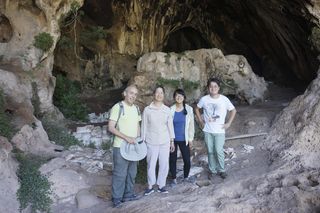
The remains of the world's oldest known beer brewery, dating back about 13,000 years, were discovered in a cave in Israel this year. Mashed wheat and barley, used for brewing, were found lining pits carved into bedrock. The cave contains burials, and archaeologists believe that beer may have been brewed for a funeral.
The Stone-Age beer was brewed by people who are from what modern-day archaeologists call the Natufian culture. This culture flourished in the Middle East between roughly 15,000 and 11,500 years ago, and engaged in horticulture and animal husbandry. The techniques the Natufians developed paved the way for the widespread use of agriculture in the region. [Read more about the oldest brewery]
World's oldest (mummy) cheese
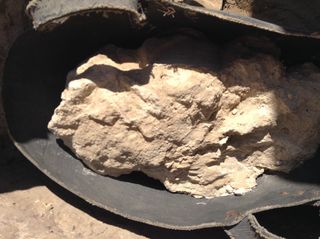
The world's oldest known cheese, dating back about 3,300 years, was discovered at the site of Saqqara in Egypt, archaeologists reported in August. Found in a large cache of broken clay jars inside the tomb of Ptahmes, who was a mayor of Memphis, the cheese appears to be made out of a combination of cow's milk and sheep or goat's milk.
You don't want to eat this cheese, though, as scientists found proteins associated with Brucella melitensis, a bacterium that causes a contagious disease called brucellosis. It's a disease that commonly spreads from bovine animals to humans through unpasteurized milk and contaminated meat, with nausea, vomiting and fever being just a few of its symptoms. [Read more about the oldest cheese]
Massive (and gruesome) child sacrifice
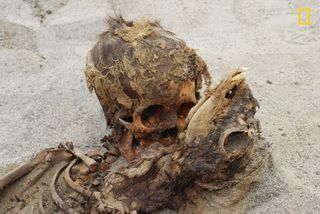
In one of the largest human sacrifices ever discovered, archaeologists found the remains of 140 children between ages 5 and 14, as well as 200 llamas at the site of Las Llamas in Peru. At least some of the children had their hearts ripped out. The children were well-nourished, and there is no sign that they tried to escape — although animal tracks show that some of the llamas tried to escape.
The sacrifices occurred about 550 years ago at a time when a people whom modern-day archaeologists call the "Chimu" ruled much of Peru. The children were buried facing the sea, while the llamas were buried facing the Andes mountains. Why they were buried that way is not clear, archaeologists said. The massive sacrifice may have been a way to end the suffering caused by environmental problems linked to El Niño — a climate cycle that causes warm water to pool offshore of northwestern South America, causing changes in global weather patterns. [Read more about the massive child sacrifice found in Peru]
Oldest human footprints in N. America
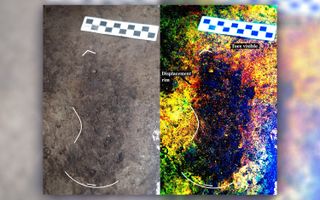
Some 29 footprints, dating back more than 13,000 years, were discovered on Calvert Island in British Columbia, Canada, archaeologists reported in March. Analysis shows that these footprints were left by three people, one of whom was a young child and two others who may have been adults. All three were barefoot at the time they left the footprints.
The footprints were preserved for so long because the individuals were walking on wet clay that in time became hardened and filled with sand, archaeologists found. A small amount of wood found with the footprints allowed scientists to run radiocarbon dating on the prints, revealing they were created sometime between 13,300 and 13,000 years ago.
The three people who left the footprints may have been disembarking from a canoe and walking inland toward a drier area. The preservation of the footprints was so good that researchers could assign modern U.S. shoe sizes to them — one was a junior size 8, another a junior size 1 or a woman's size 3 and another a woman's size 8 or a man's size 7. [Read more about North America's oldest footprints]
60,000 ancient Maya Structures
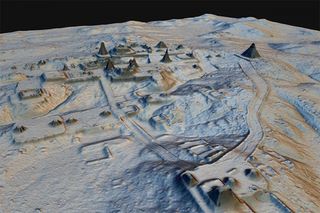
More than 60,000 structures built by the ancient Maya were discovered by researchers using airborne lidar(light detection and ranging) in Guatemala, they announced in September. This technique uses laser light beamed from airplanes to detect structures, making it easier to find archaeological remains that are obscured beneath thick forest canopy.
The new structures include the remains of pyramids, palaces, houses, defensive fortifications, roadway networks, reservoirs, irrigation channels and vast areas used for agriculture researchers say. The discovery indicates that about 11 million people lived in the Maya lowlands during the late Classic period, from A.D. 650 to 800. [Read more about the ancient Maya structures]
Mummification before writing

A mummified Egyptian adult male, dating back sometime between 3700 — 3500 B.C., shows the earliest known evidence for embalming, the use of ingredients to help mummify a person. Samples of linen fragments found on the mummy's torso and right wrist, as well as a woven basket buried with the mummy, reveal that the man was mummified with sugar or gum, conifer resin, antibacterial agents and aromatic plant extracts, researchers found. It was originally believed that this person was naturally mummified.
The discovery indicates that the Egyptians learned to embalm people before writing was invented around 3400 B.C. This means that the mummy recipe would have been passed down orally for generations before it was ever written down. The mummy is now in the Egyptian Museum of Turin, in Italy, which purchased it in 1901. The mummy is believed to come from around the ancient city of Gebelein in southern Egypt, although precisely where is uncertain. [Read more about the earliest known mummy]
Sign up for the Live Science daily newsletter now
Get the world’s most fascinating discoveries delivered straight to your inbox.

Owen Jarus is a regular contributor to Live Science who writes about archaeology and humans' past. He has also written for The Independent (UK), The Canadian Press (CP) and The Associated Press (AP), among others. Owen has a bachelor of arts degree from the University of Toronto and a journalism degree from Ryerson University.